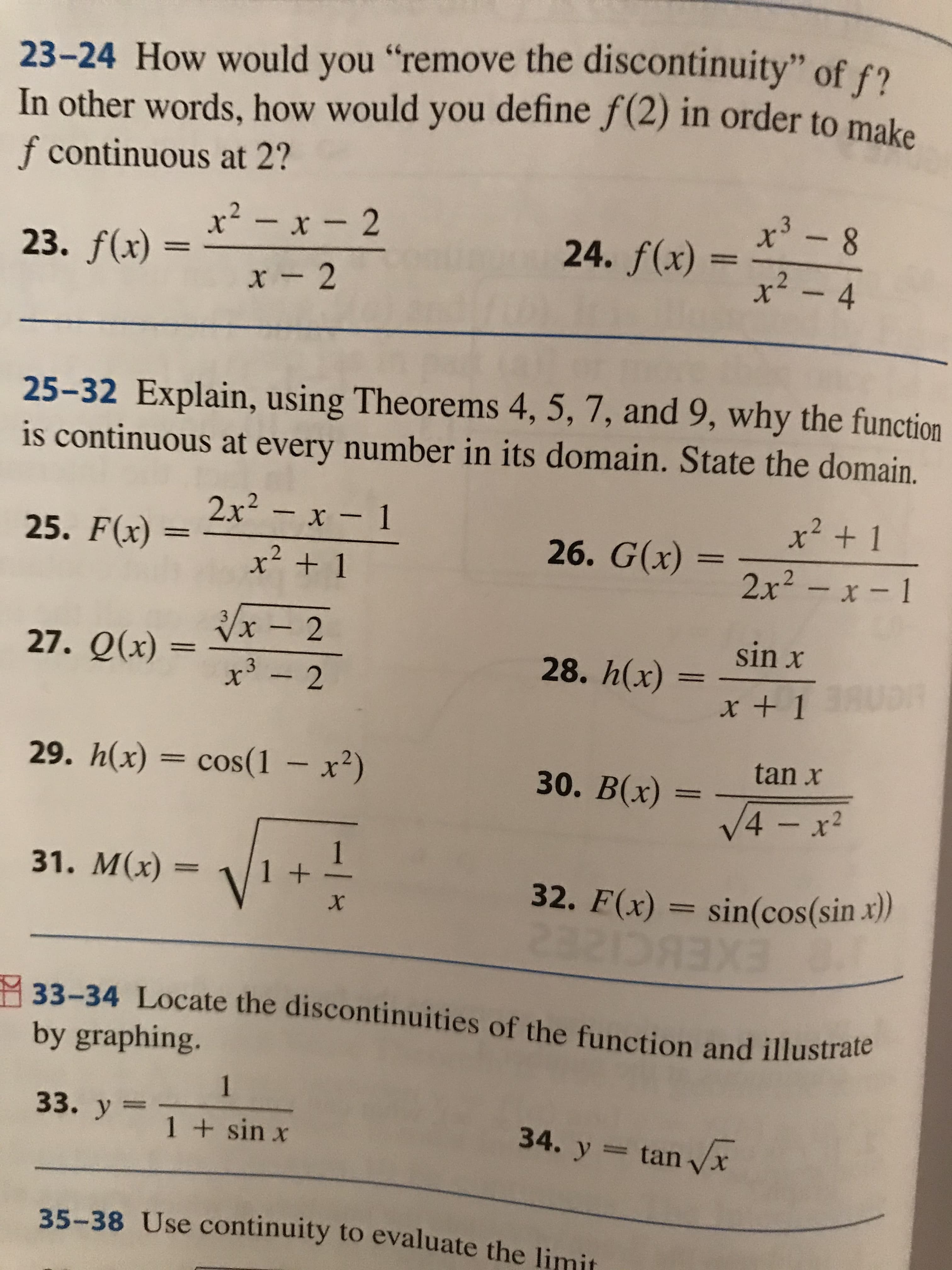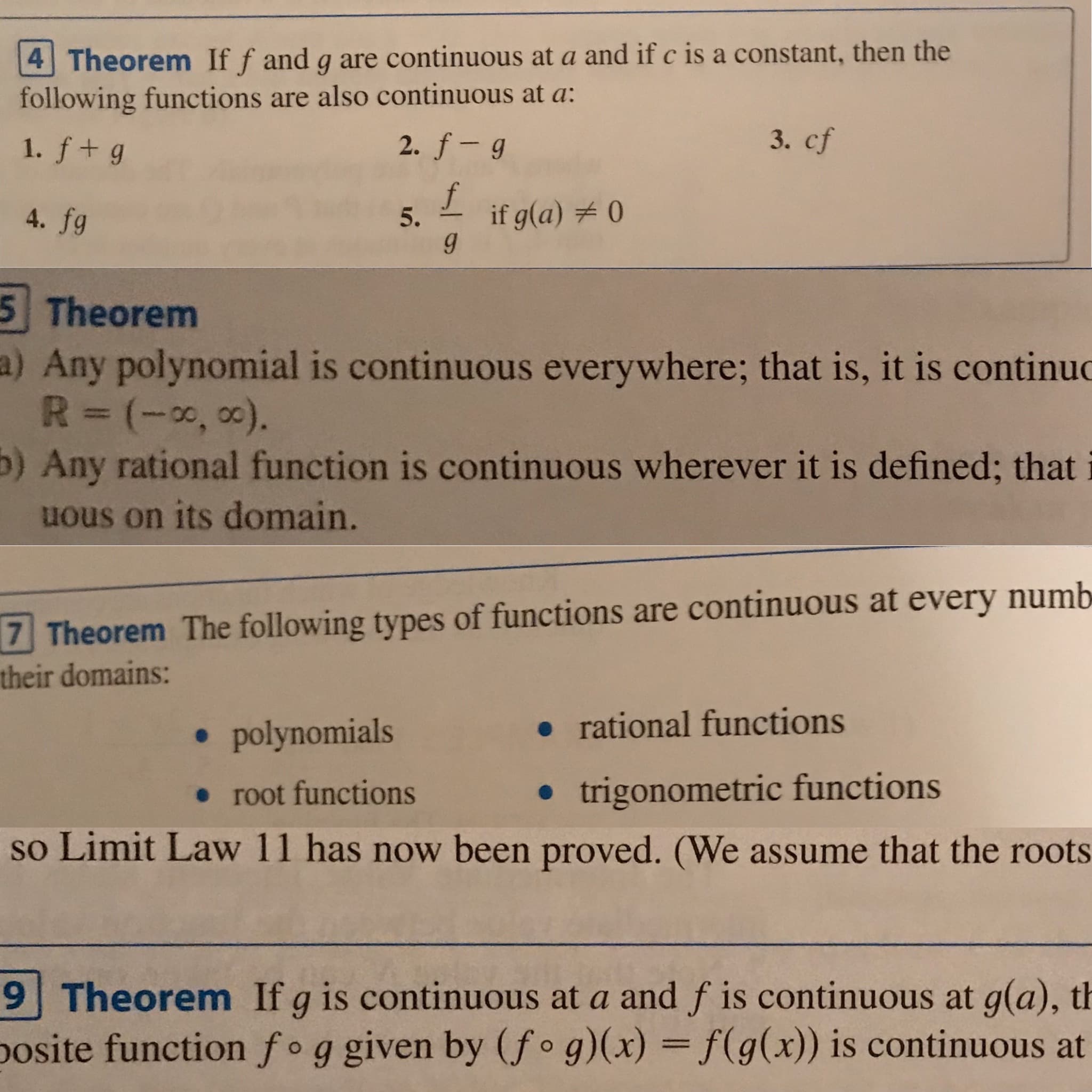23-24 How would you "remove the discontinuity" of f? In other words, how would you define f(2) in order to make f continuous at 2? x² - x - 2 +3 24. f(x) 23. f(x) = x² -4 x -2 25-32 Explain, using Theorems 4, 5, 7, and 9, why the function is continuous at every number in its domain. State the domain. 2x - x- 1 x2 + 1 25. F(x) : х 26. G(x) = .2 x + 1 2x2 - x-1 Vx – 2 3. 27. Q(x) = sin x 28. h(x) +3 x +1 U3R 29. h(x) = cos(1 – x²) tan x 30. В(х) V4 - x² 31. M(х) - 1+ 32. F(x) = sin(cos(sin.x)) EXEBCIZE2 33-34 Locate the discontinuities of the function and illustrate by graphing. 1 33. y = 1 + sin x 34. y = tan x 35-38 Use continuity to evaluate the limit 4 Theorem If f and g are continuous at a and if c is a constant, then the following functions are also continuous at a: 3. cf 2. f- g 1. f+g if g(a) # 0 4. fg 5. 5 Theorem a) Any polynomial is continuous everywhere; that is, it is continuc R=(-0, 0). b) Any rational function is continuous wherever it is defined; that uous on its domain. 7 Theorem The following types of functions are continuous at every numb their domains: • rational functions • polynomials • trigonometric functions • root functions so Limit Law 11 has now been proved. (We assume that the roots 9 Theorem If g is continuous at a and f is continuous at g(a), th posite function fog given by (f•g)(x) = f(g(x)) is continuous at %3D
Unitary Method
The word “unitary” comes from the word “unit”, which means a single and complete entity. In this method, we find the value of a unit product from the given number of products, and then we solve for the other number of products.
Speed, Time, and Distance
Imagine you and 3 of your friends are planning to go to the playground at 6 in the evening. Your house is one mile away from the playground and one of your friends named Jim must start at 5 pm to reach the playground by walk. The other two friends are 3 miles away.
Profit and Loss
The amount earned or lost on the sale of one or more items is referred to as the profit or loss on that item.
Units and Measurements
Measurements and comparisons are the foundation of science and engineering. We, therefore, need rules that tell us how things are measured and compared. For these measurements and comparisons, we perform certain experiments, and we will need the experiments to set up the devices.
#27


Trending now
This is a popular solution!
Step by step
Solved in 3 steps with 3 images




